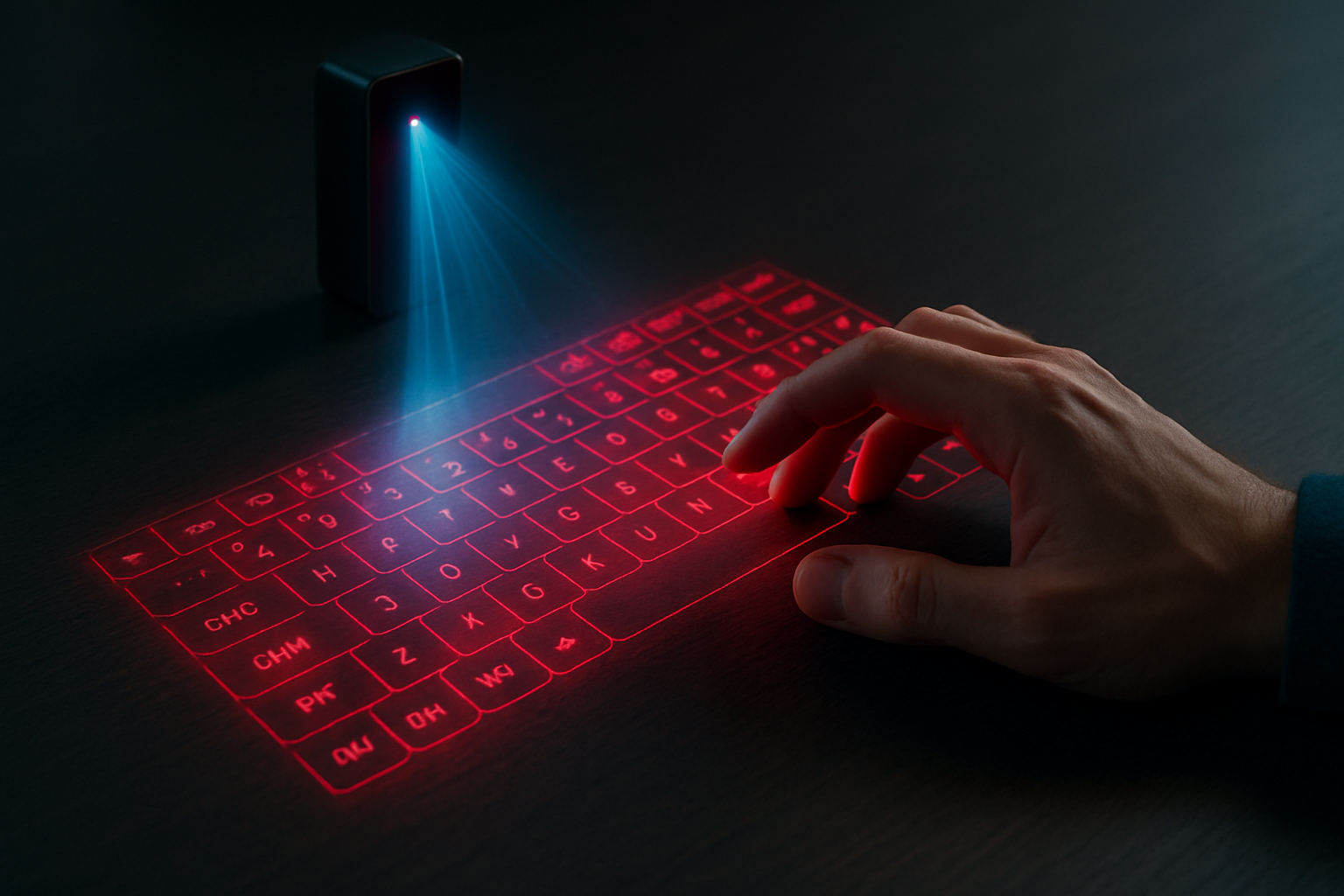Holographic Keyboards: The Future of Typing?
In a world where technology continues to push boundaries, holographic keyboards are emerging as a futuristic solution that could revolutionize the way we interact with our devices. These ethereal input methods promise to blend the tactile sensation of typing with the flexibility of virtual interfaces. As we delve into this cutting-edge technology, we'll explore its potential to reshape our digital interactions and the challenges it faces in becoming a mainstream input device.

The Science Behind the Light
Holographic keyboards use a combination of laser projection and infrared sensors to create a virtual keyboard on any flat surface. A small projector emits an image of a keyboard, while infrared beams detect the movement of fingers within the projected area. When a user “presses” a key, the interruption of the infrared beam is interpreted as a keystroke, translating the action into text on the connected device.
A Brief History of Virtual Typing
The concept of projection keyboards isn’t entirely new. The first commercially available models appeared in the early 2000s, with companies like VKB and Canesta leading the charge. However, these early versions were plagued by issues such as poor accuracy and high power consumption, limiting their widespread adoption. Today’s holographic keyboards benefit from nearly two decades of technological advancements, offering improved performance and functionality.
Current State of the Technology
Modern holographic keyboards have come a long way from their predecessors. Companies like Celluon and Serafim have introduced products that boast improved accuracy and compatibility with a wide range of devices. These keyboards typically connect via Bluetooth and are compatible with smartphones, tablets, and laptops. Prices for consumer-grade holographic keyboards range from $100 to $300, making them accessible to tech enthusiasts and early adopters.
Advantages Over Traditional Keyboards
One of the most significant advantages of holographic keyboards is their portability. With no physical components, these devices can be incredibly compact, often fitting in a pocket or small bag. This makes them ideal for travelers, digital nomads, or anyone looking to minimize their tech footprint. Additionally, the lack of moving parts means there’s less chance of mechanical failure or wear and tear over time.
Challenges and Limitations
Despite their futuristic appeal, holographic keyboards face several challenges. The lack of tactile feedback can be disorienting for users accustomed to physical keys, potentially leading to slower typing speeds and increased errors. Environmental factors such as ambient light and surface texture can also affect performance. Moreover, the technology still struggles with accuracy, especially when it comes to detecting rapid or complex finger movements.
The User Experience
Using a holographic keyboard for the first time can be a surreal experience. The sensation of typing on light takes some getting used to, and many users report a learning curve as they adjust to the lack of physical key resistance. However, proponents of the technology argue that with practice, users can achieve typing speeds comparable to those on traditional keyboards.
Market Impact and Future Prospects
While holographic keyboards have yet to achieve mainstream adoption, they’re carving out a niche in the tech accessories market. As the technology improves, we may see increased integration with other devices, such as smartwatches or augmented reality glasses. The potential for customizable layouts and seamless multilingual switching could make holographic keyboards particularly appealing in certain industries or for multilingual users.
Beyond Text Input: Expanded Functionality
Holographic keyboards aren’t limited to text input. Some models offer gesture recognition, allowing users to control their devices with swipes and pinches. This expanded functionality could pave the way for new forms of human-computer interaction, blending typing with more intuitive, gesture-based commands.
The Road Ahead
As with any emerging technology, the future of holographic keyboards is uncertain. Will they remain a niche product for tech enthusiasts, or could they eventually replace physical keyboards in certain applications? The answer likely depends on continued improvements in accuracy, usability, and integration with other technologies.
While holographic keyboards may not be poised to replace traditional input methods entirely, they represent an exciting step forward in the evolution of human-computer interaction. As the technology continues to develop, we may find ourselves increasingly typing on light, blurring the lines between the physical and digital worlds. Whether holographic keyboards become the next big thing or remain a fascinating technological curiosity, they serve as a reminder of the endless possibilities that emerge when we dare to reimagine the tools we use every day.





